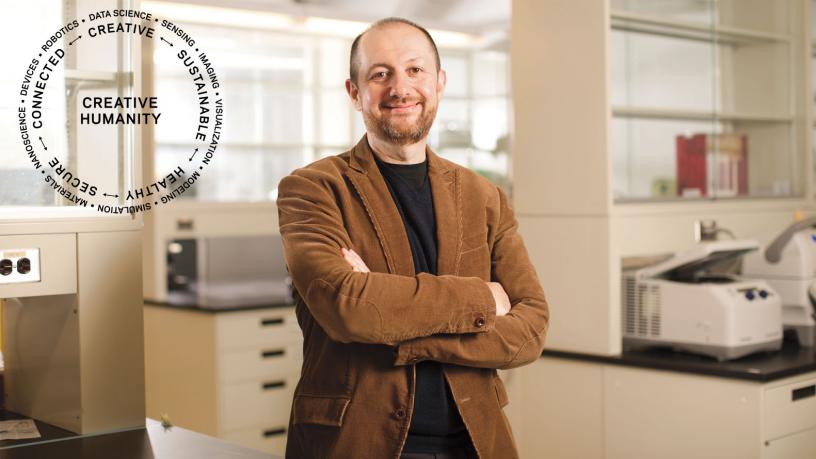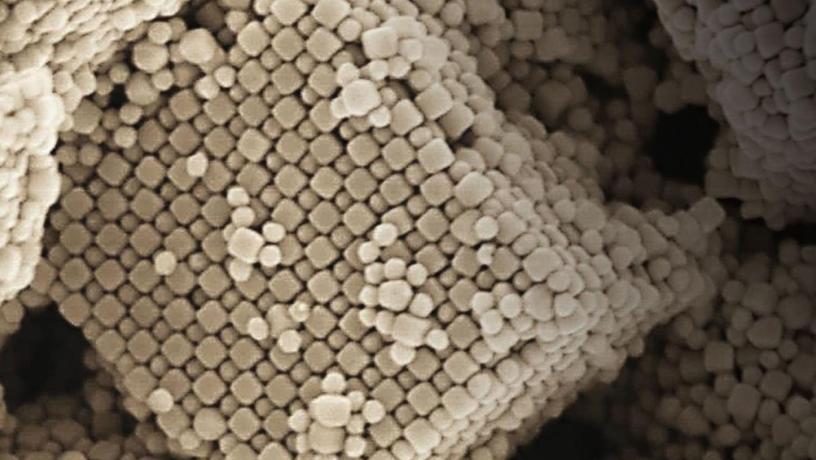Engineering for a Creative Humanity: Inventing Smart Materials

Oleg Gang has successfully developed programmable nanoscale building materials using DNA.

This image depicts a self-assembled crystal of sphere and cube nanoparticles assembled with DNA in his lab.
Imagine a world where materials with tailor-made properties could self-assemble into systems that improve almost every area of life.
Creative thinking can inspire astonishing breakthroughs in engineering—including entirely new materials and systems. Oleg Gang, professor of chemical engineering and of applied physics and material science, is among the world’s top engineers spearheading the invention of a new class of custom-made nanoscale materials and devices that promise innovative ways to address problems while transforming industries such as manufacturing, medicine, energy, electronics, and telecommunications.
In nature, structures self-assemble through internal instructions and are able to adapt and respond to their environments. This is true on many scales and for many systems, from crystal formation to the biological world. In Gang’s lab, researchers work to construct new self-assembling structures based on nanoscale objects—such as man-made nanoparticles or biomolecules borrowed from nature—by both programming the assembly and controlling the properties of the resulting structure. The goal is to create fully designed materials with properties that mimic or even go beyond those found in nature, with the versatile architectures and ability to function as nanoscale machinery.
DNA holds much promise for self-assembly research, as it possesses great flexibility of form as well as the ability to establish a “language” for particle interaction. Yet its inherently fragile nature makes it challenging for use in systems that need to function across a broad range of conditions. Recently, Gang’s group was able to mineralize architectures formed by DNA scaffolds and nanoparticles, rendering them stable in extreme temperatures and pressures, a feat that will open up numerous applications.
Gang hopes these advances could one day lead to implants that marry organic and inorganic components and to “smart” materials that can change their shape, appearance, or function according to context.
“There are systems that exist only in our imagination,” says Gang. “I want to figure out the principles that can bring them to reality.”
